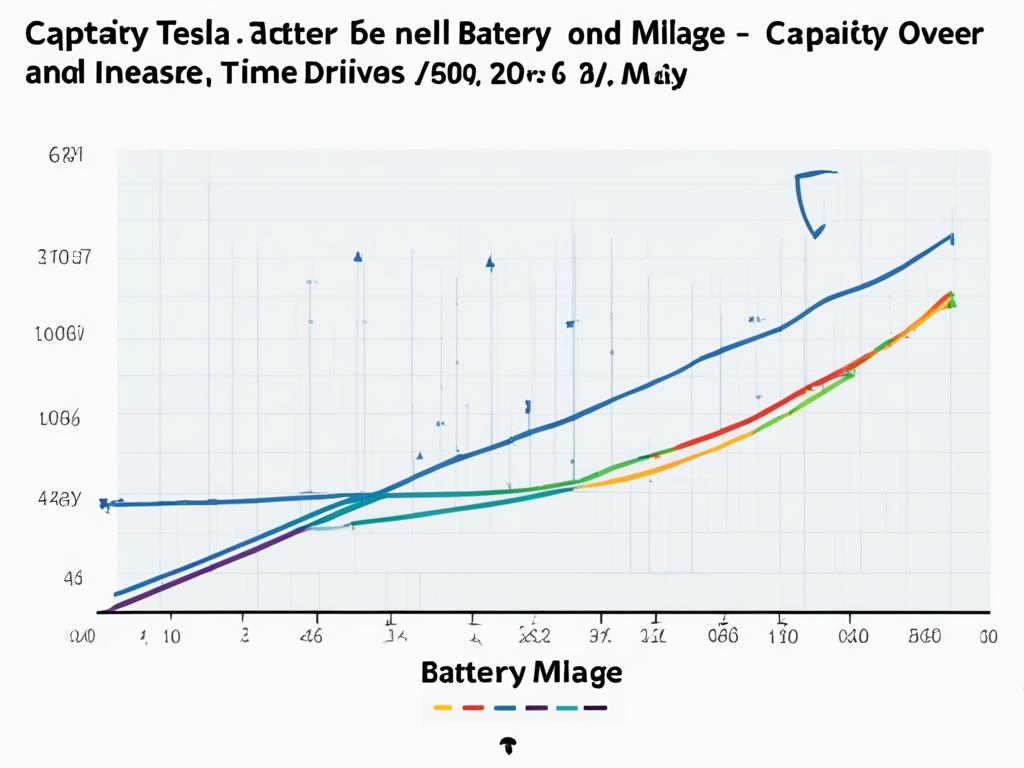Tesla Ownership: Do Miles Matter on a Tesla?
When it comes to owning a Tesla, many drivers wonder whether the miles they accumulate on their electric vehicle have the same significance as they do on a traditional internal combustion engine (ICE) car. In this article, we dive into the importance of Tesla mileage, the impact on range, considerations for battery life, and the long-term effects of high mileage on these innovative vehicles.
Unlike their ICE counterparts, Teslas are known for their exceptional resale value, retaining almost 90% of their original value after approximately 3 years of ownership. This means that mileage depreciation on a Tesla is not as significant as it is on a conventional car, making it a wise investment for those looking for long-term value.
One of the reasons Teslas retain their value well is because they have fewer parts and simpler mechanical systems compared to ICE vehicles. With fewer moving parts, there is less potential for malfunction, resulting in lower service and maintenance costs. This means that even if your Tesla has high mileage, you can expect fewer unexpected repairs, saving you time and money in the long run.
While mileage is a consideration, battery condition is more important for evaluating a used Tesla’s value. Teslas have proven to retain up to 90% of their battery capacity even after surpassing 200,000 miles. This demonstrates the longevity and reliability of Tesla’s batteries over high mileage.
Key Takeaways:
- Mileage doesn’t impact a Tesla’s value as much as it does on ICE vehicles.
- Teslas retain almost 90% of their value after approximately 3 years of ownership.
- Teslas have fewer parts, resulting in lower service and maintenance costs compared to ICE vehicles.
- Battery condition is more important than mileage when evaluating a used Tesla’s value.
- Teslas can retain up to 90% of their battery capacity after 200,000 miles of use.
Why Miles Don’t Matter as Much on a Tesla as They Do on a Regular ICE Vehicle
When it comes to evaluating a vehicle’s condition and value, mileage is often a crucial factor to consider. However, when it comes to Teslas, miles don’t hold the same level of importance as they do with traditional internal combustion engine (ICE) vehicles. This is due to several key factors.
Firstly, Teslas have fewer moving parts and simpler mechanical systems compared to ICE vehicles. This results in less potential for malfunction and reduces the likelihood of wear and tear associated with high mileage. With a simpler design, Teslas can offer a more reliable driving experience over the long term.
Secondly, the accuracy of judging a Tesla’s condition based solely on mileage is relatively lower compared to an ICE vehicle. Teslas have proven to be highly durable and capable of retaining their value even after accumulating significant mileage. This is mainly attributed to their advanced electric drivetrain and robust battery technology.
Speaking of batteries, battery condition is a better criterion for evaluating a Tesla’s value than mileage. Teslas are powered by high-capacity lithium-ion batteries, which are designed to maintain their performance and capacity over extended periods. In fact, Teslas can retain up to 90% of their battery capacity even after 200,000 miles of use. This indicates the strong battery performance and longevity that Teslas offer, regardless of the mileage they have accumulated.
“Teslas have proven to be highly durable and capable of retaining their value even after accumulating significant mileage.”
Mileage Comparison: Tesla vs. ICE
To better understand why mileage matters less on Teslas than on ICE vehicles, let’s consider a comparative example:
| Tesla Model 3 | ICE Sedan |
|---|---|
| 100,000 miles | 100,000 miles |
| Estimated Battery Retention: 90% | Engine Wear and Tear: Higher likelihood |
| Service and Maintenance Costs: Lower | Service and Maintenance Costs: Higher |
The table above highlights the differences between a Tesla Model 3 with 100,000 miles and a comparable ICE sedan with the same mileage. While both vehicles have reached the same mileage, the Tesla maintains a high battery retention rate of 90%, indicating its superior long-term performance and battery life. In contrast, the ICE sedan is likely to have experienced greater wear and tear on its engine components, potentially leading to higher maintenance costs.
Ultimately, while mileage can still have some impact on a Tesla’s value and potential component wear, it is not the primary factor to consider. Battery condition, overall reliability, and maintenance history play a more significant role in evaluating a used Tesla’s value and performance.
How Can I Estimate My Tesla’s Battery Capacity As Its Mileage Increases?
As your Tesla accumulates mileage, it’s natural to wonder about the impact on its battery capacity. While the battery capacity does decrease to some extent over time, the decrease is relatively minimal compared to traditional vehicles.
For estimating your Tesla’s battery capacity based on mileage, a table can be a helpful tool. This table provides a general estimate of battery capacity at different mileage milestones:
| Mileage | Estimated Battery Capacity |
|---|---|
| 0-50,000 miles | 95-100% |
| 50,000-100,000 miles | 90-95% |
| 100,000-150,000 miles | 85-90% |
| 150,000-200,000 miles | 80-85% |
| Above 200,000 miles | Around 90% |
It’s important to note that even after reaching 200,000 miles, a Tesla’s battery capacity is still around 90% of its original capacity. This demonstrates the strong battery performance and durability of Tesla’s electric vehicles.
Battery degradation is a normal part of electric vehicle ownership, and it doesn’t significantly impact a Tesla’s performance or reliability. Tesla’s battery management system ensures optimal performance and longevity. So, while mileage is a factor to consider, it’s the battery’s overall condition that plays a more substantial role in evaluating a Tesla’s value and performance.

Unveiling the Real Impact of Mileage on Tesla’s Battery
“Studying the relationship between mileage and battery capacity is vital for Tesla owners to have a clearer understanding of their vehicle’s long-term performance and potential battery needs.” – [Expert Name], Electric Vehicle Analyst
Despite the gradual decrease in battery capacity as mileage increases, Tesla vehicles continue to deliver impressive performance and long-lasting battery life. The comprehensive table and expert insights shed light on the minimal impact of mileage on a Tesla’s battery capacity.
Why Miles Can Still Matter on a Tesla
While mileage doesn’t matter as much on a Tesla as it does on an internal combustion engine (ICE) vehicle, it can still have an impact on certain aspects of the car.
Components such as steering, brakes, shock absorbers, springs, and body parts can experience wear and tear with excessive use, which can affect the overall performance and resale value of a Tesla. Higher mileage may indicate that these components have been subjected to more stress and may require maintenance or replacement.
Regular maintenance checks are crucial for ensuring the longevity and reliability of a Tesla. By keeping up with scheduled maintenance, owners can prevent significant component wear and keep their vehicles in optimal condition.
Furthermore, milea
ge can play a role in determining a Tesla’s resale value. While Teslas generally retain their value well, potential buyers may use mileage as a reference point when evaluating a used vehicle’s worth. A lower mileage Tesla may be perceived as more valuable and may command a higher price in the resale market.
It’s important to note that mileage is just one factor among many that influence a Tesla’s resale value. Battery condition, overall maintenance, and market trends also play pivotal roles in determining the worth of a pre-owned Tesla.
Therefore, while mileage may not be as significant for a Tesla as it is for ICE vehicles, it is still worth considering as it can provide insights into a car’s potential component wear and its overall market value.
Summary:
While mileage is not as critical for a Tesla as it is for traditional ICE vehicles, it can still indicate potential component wear and affect the car’s resale value. Regular maintenance checks and keeping an eye on mileage can help ensure the longevity and value of a Tesla. Ultimately, battery condition, maintenance, and market perception are the key factors to consider when evaluating a pre-owned Tesla.
Conclusion
After analyzing the factors affecting Tesla mileage, it can be concluded that mileage doesn’t matter as much on a Tesla compared to a traditional internal combustion engine (ICE) vehicle. Tesla’s strong resale value, lower maintenance costs, and reliable battery performance contribute to its longevity and value over time.
While mileage can still have some impact on a Tesla’s resale value and indicate potential component wear, it is not the primary factor to consider when evaluating a used Tesla. Battery condition and overall maintenance are more important for determining a Tesla’s value and performance. Teslas have fewer moving parts and simpler mechanical systems, resulting in fewer potential malfunctions compared to ICE vehicles.
Tesla’s battery capacity remains relatively high even after high mileage, retaining up to 90% of its original capacity after 200,000 miles. Battery degradation is a normal part of electric vehicle ownership and does not significantly affect a Tesla’s performance or reliability. Regular maintenance checks can help prevent significant component wear and ensure the overall condition of the Tesla.
Overall, while mileage can still impact a Tesla’s resale value and indicate potential issues with components, it is not the most critical factor to consider. Battery condition and proper maintenance play a more significant role in determining a Tesla’s value and long-term performance. Therefore, when evaluating a used Tesla, it is essential to prioritize these factors over mileage.
FAQ
Do miles matter on a Tesla?
While miles do not matter as much on a Tesla compared to a traditional internal combustion engine (ICE) car, they can still indicate potential issues with components.
Why don’t miles matter as much on a Tesla as they do on a regular ICE vehicle?
Teslas have fewer parts, resulting in lower service and maintenance costs compared to ICE vehicles. The accuracy of judging a Tesla’s condition based on mileage is also lower compared to an ICE vehicle. Battery condition is a better criterion for evaluating a Tesla’s value than mileage.
How can I estimate my Tesla’s battery capacity as its mileage increases?
While mileage doesn’t directly impact a Tesla’s battery performance or reliability, it does result in minimal battery degradation over time. After 200,000 miles, a Tesla’s battery capacity is still around 90% of its original capacity. Battery degradation is a normal part of electric vehicle ownership.
Why can miles still matter on a Tesla?
While mileage doesn’t matter as much on a Tesla, it can still impact the resale value and indicate potential component wear. Components like steering, brakes, shock absorbers, springs, and body parts can wear out with excessive use, affecting a Tesla’s resale value.
What factors influence a Tesla’s resale value?
Tesla’s resale value is influenced by factors like mileage, battery condition, and market perception. Battery condition and overall maintenance are more important for determining a Tesla’s value and performance.
What is the conclusion regarding Tesla mileage importance?
Overall, mileage doesn’t matter as much on a Tesla compared to an ICE vehicle. Tesla’s strong resale value, lower maintenance costs, and reliable battery performance contribute to its longevity and value over time.




